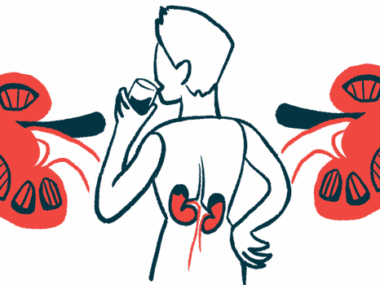My aHUS has helped me in at least one area: learning patience
I wasn't good at waiting before, but I've had to get used to it since my diagnosis
Written by |

Note: This column was updated Jan. 16, 2025, to correct that Soliris is an antibody therapy.
Patience is not my strongest trait and never has been. I’ve always been a go-getter. When I wanted something done, I knew no one was going to do it for me, so I did it myself — whenever I wanted. But getting a lifelong illness has taught me a lot of lessons in patience.
For most of 2020, I was Ms. Independent. As a single mom and an assistant director at a school making more money then ever, I was remodeling my first house on my own (with YouTube) and planning to flip a second house, which would launch my career in real estate. For the first time in a long while, I felt accomplished.
But that all came to a screeching halt in September 2020, when I was admitted to the hospital with multiorgan failure.
I’d gone to the emergency room thinking I had COVID-19 again, assuming a doctor would give me a note telling me to take a few days off for rest. I remember sitting in the ER with my 4- and 5-year-old sons running around me, thinking, “This will be great. I’ll sleep in tomorrow, start feeling a little better, and then I can work on more remodeling while I’m off work.”
Sadly, I wasn’t being sent home. I was admitted to the intensive care unit, where I stayed for nearly two months. I had organs filling with blood clots, and my free-flowing red blood cells were being destroyed in what’s known as hemolytic anemia. My kidneys were damaged the most, functioning at only 5%. I almost died that day.
Members of my medical team had a good handle on what was happening to me, but they had no idea why. Minutes turned into hours, hours turned into days, and days turned into weeks. Each day involved painful blood draws, questions from doctors, four hours of dialysis, and two hours of plasmapheresis — plus, I was awakened every time I tried to rest.
The waiting game begins
I spent weeks watching myself waste away from the loss of muscle mass. My bills compounded with each passing day. Sometimes I sat for hours just staring at the wall across from my hospital bed. I watched each drop of blood drip in my IV when I received blood transfusions. All I could do was sit and wait.
After four weeks, I finally received a diagnosis: I had atypical hemolytic uremic syndrome (aHUS). “OK, great,” I thought. “I have a diagnosis. They’ll give me medicine for it, and I’ll get better and resume my life.” Wrong!
I hadn’t realized just how weak I was. With muscle loss, damaged organs, dialysis, and treatment with Soliris (eculizumab), I had a long road ahead of me. Making it worse, I fell and punctured my liver less then 24 hours after my release. Back to intensive care for three more weeks.
It’s taken me years to recover even to the small extent that I have — years of hypertension, surgeries, complications, diseases, ailments, antibody therapy, and more. Now, three years into aHUS, I still have antibody therapy twice a month, doctor appointments two to three times a month, and multiple prescriptions to refill. And all of that means more waiting and more patience.
Last summer, about a month after we moved to North Carolina, my fiancé began driving me to antibody therapy three hours away in South Carolina. He and our friends used to joke about how long I’d be gone for a 45-minute infusion: I’d leave home at 8:30 a.m. and wouldn’t get back until 7 p.m. They all thought I was taking forever by making tons of stops.
But once he drove me, he saw why it took so long. Hunt for parking, 15 minutes; stand in line at check-in, 15 minutes; wait for bloodwork, 30 minutes; wait for blood pressure and weight and temperature check, 20 minutes; wait to get an IV run, 30 minutes; wait for lab work to clear me for antibody therapy, 30 to 60 minutes; wait for pharmacy to mix my medication, 30 minutes. All of that time spent waiting!
My pain management appointments take only 90 seconds, but I typically have to wait two hours past my appointment time for my turn. Many doctors’ offices have too many patients and not enough physicians on duty, so waiting has become a normal part of it all.
My days are now filled with waiting at doctor appointments, waiting on the phone to fill prescriptions, waiting for doctors to reply to questions or issues, or even waiting on the phone for over two hours to speak to public assistance programs (as I did today).
My patience is tested at every corner. There’s not much I can do but wait. Whether I want it or not, being patient is something that’s become a regular part of my life. One of the only perks of my rare illness is the amount of patience it’s taught me. Waiting and dealing with delays is nothing versus the arduous journey I’ve been through with aHUS.
Note: aHUS News is strictly a news and information website about the disease. It does not provide medical advice, diagnosis, or treatment. This content is not intended to be a substitute for professional medical advice, diagnosis, or treatment. Always seek the advice of your physician or other qualified health provider with any questions you may have regarding a medical condition. Never disregard professional medical advice or delay in seeking it because of something you have read on this website. The opinions expressed in this column are not those of aHUS News or its parent company, Bionews, and are intended to spark discussion about issues pertaining to aHUS.






Leave a comment
Fill in the required fields to post. Your email address will not be published.